Ubuntu keyboard shortcuts every user should know
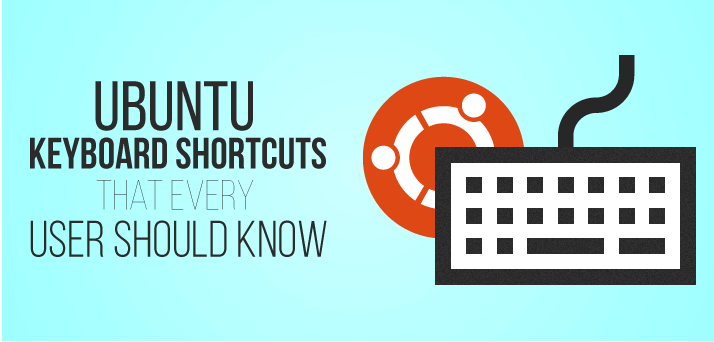
No matter what operating system you are using, keyboard shortcuts can help you get started quickly, saving time and effort when launching applications or navigating to a desired window.
Just like in Windows, there are some Ubuntu hotkeys to simplify operations and make things easier. In this tutorial, you will learn some beautiful Ubuntu keyboard shortcuts that can help you simplify your life and increase your work efficiency.
01
**Use Super Key (Windows key) **
Just press the Windows key button, which is a super key called Super Key in Unix systems, to launch the search menu, as shown below. To search for an application, just type the application name and click on the application’s icon.
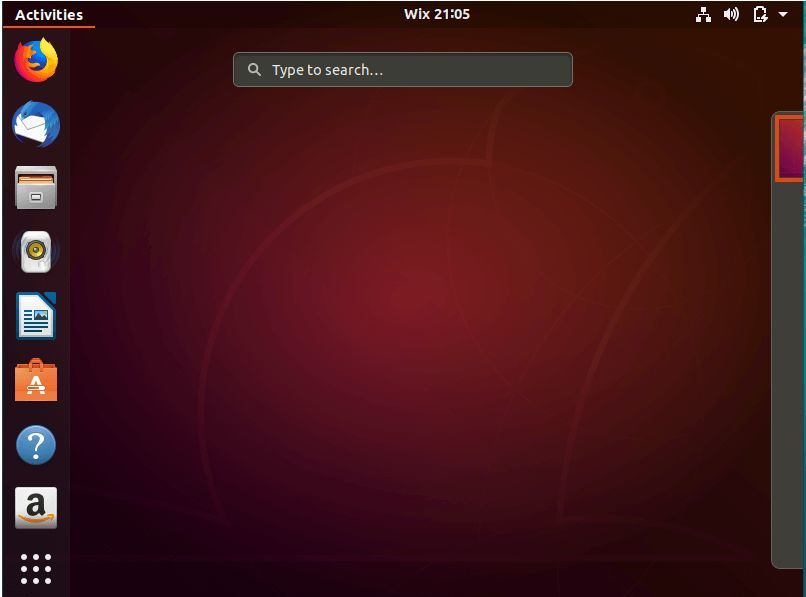
You can also use Super key to view all the launched applications at once, as shown below.
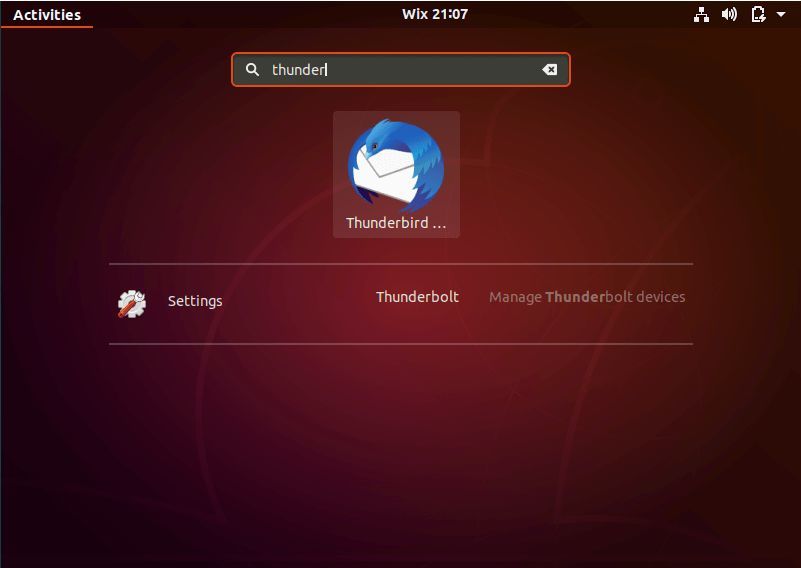
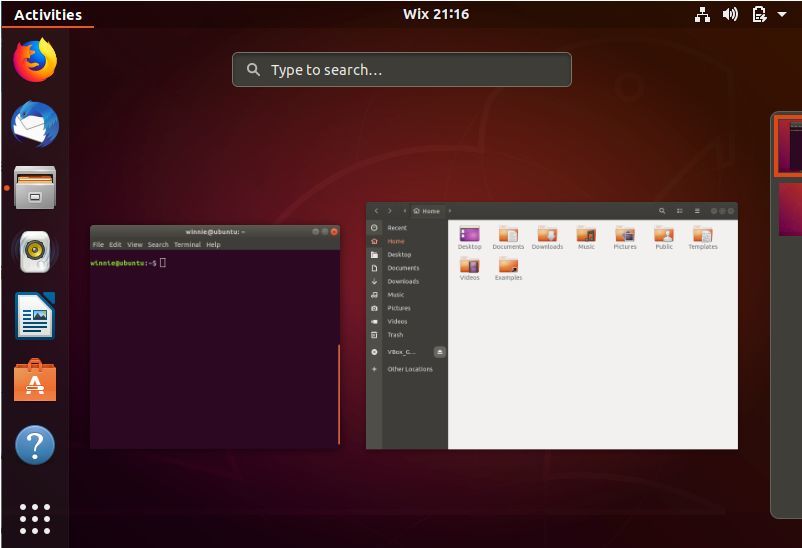
02
Use the super key to start the terminal
Another useful and convenient shortcut is the terminal shortcut. You can use the simple Ubuntu keyboard shortcut "CTRL + ALT + T" to start the terminal. This is one of the simplest and most beautiful shortcuts to launch the terminal in the shortest time.
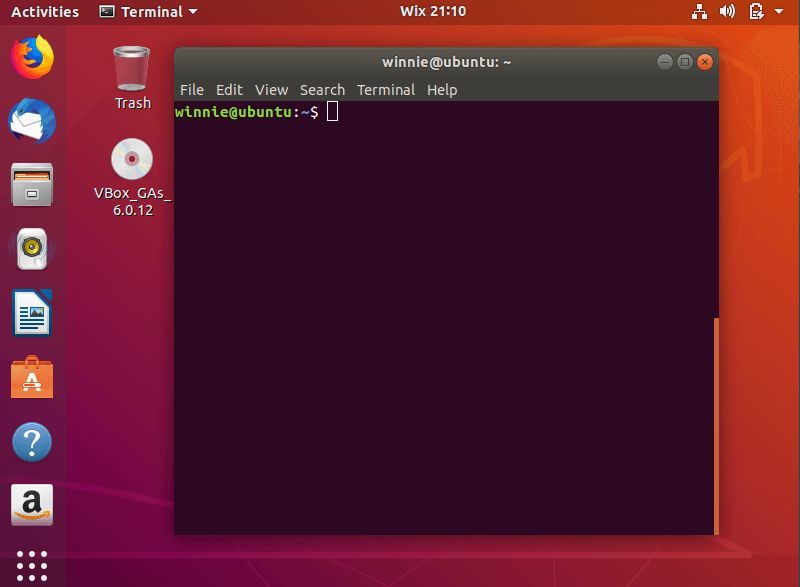
03
Lock screen
Just like in Windows, to lock the screen, just press "Super key + L" or "CTRL + ALT + L". This is a way to lock the screen faster. You can set the option to lock the screen in the upper right corner of the screen.
04
Show desktop when opening several windows
Usually, you may find that one or two windows or more are open in a given time. To minimize them and restore them to the desktop, just press "Super Key + D". Alternatively, you can press the "CTRL + ALT + D" keys. All active windows will be minimized, leaving only the desktop.
05
Launch application menu
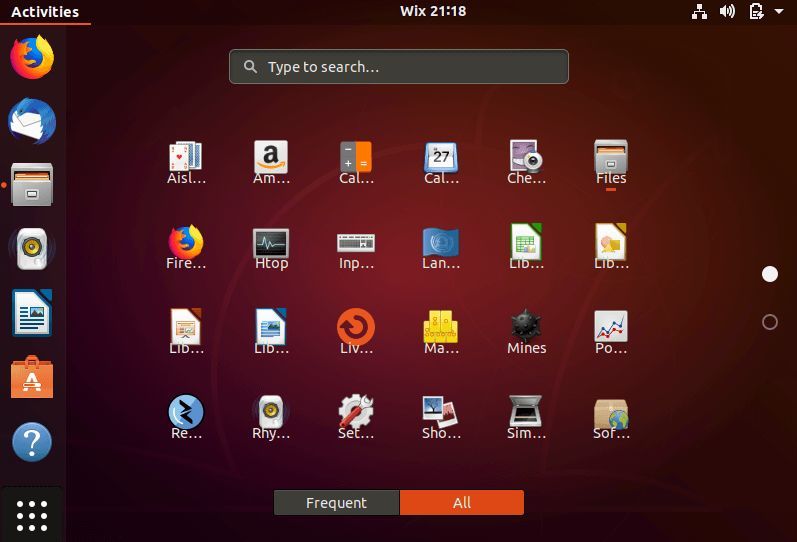
Usually, Ubuntu 18.04 comes with the GNOME display manager, which allows you to display applications by pressing the bottom left button consisting of a set of dots. The shortcut to complete this operation quickly is to press the "Super Key + A" key combination.
06
Launch application menu
In some cases, you may open many applications. To easily switch between them, use the "Super + Tab" or "Alt + Tab" key combination. And in it. Press and hold the Tab key to randomly play between applications, please press and hold the Super key. After entering the desired application, just release the two keys.
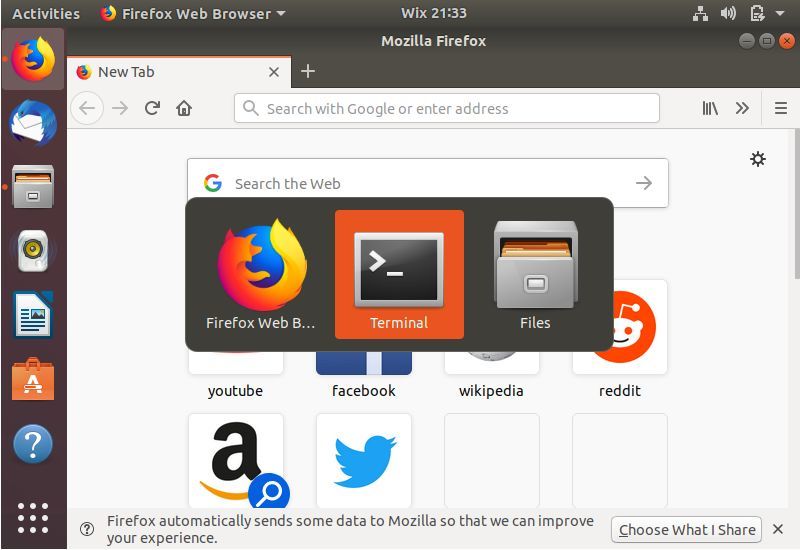
07
Switch notification tray
The GNOME interface on Ubuntu 18.04 comes with a notification bar, which can be accessed by clicking the date on the top bar. The notification bar allows you to view some application activities. To activate the notification bar, just click "Super key + M". In addition, you can press "Super Key + V" to switch various notifications.
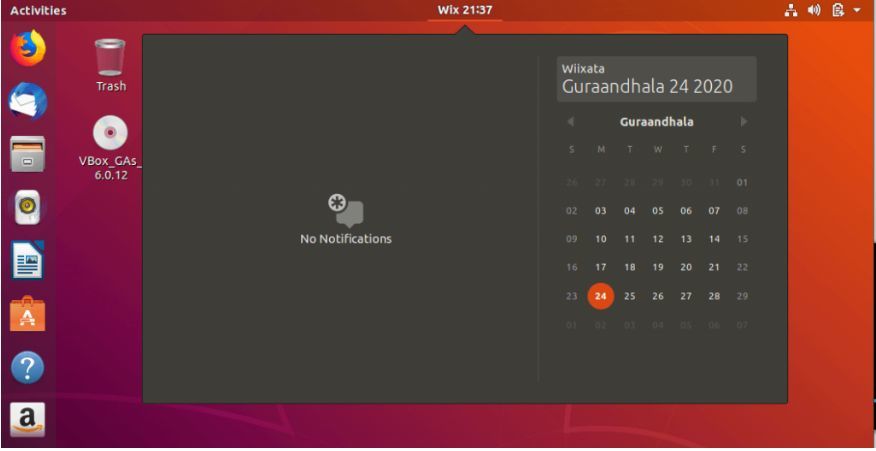
08
Split Screen
Just like in the Windows operating system, you can align the application window to the left or right, and the result is that the window eventually takes up half of the screen. Super+Right Arrow will make the application fit to the right edge. Press Super+Left Arrow, and the application will fit to the left edge of the screen.
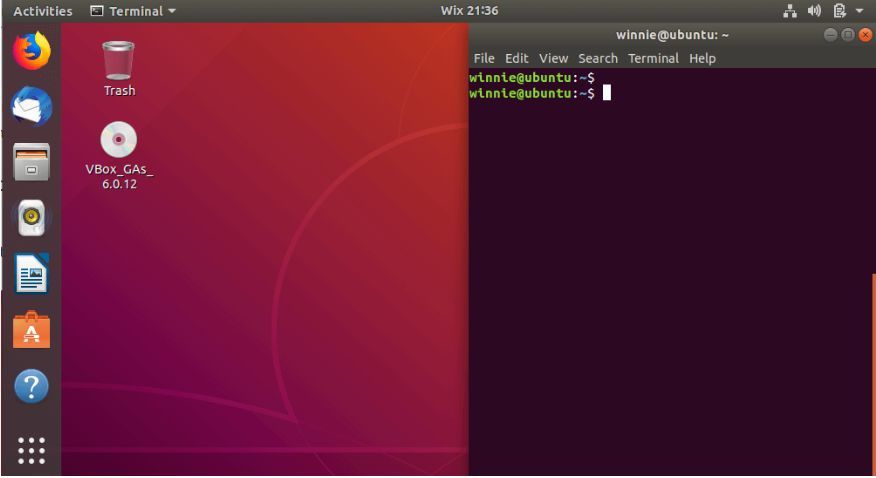
09
Shuffle between workspaces
If you have multiple workspaces open, you can easily switch between them by pressing the "CTRL + ALT + Up Arrow" or "CTRL + ALT + Down Arrow" combination.
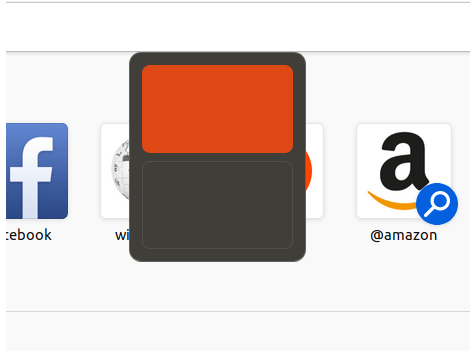
10
Run commands quickly
To run a command without having to access the terminal, just press the Ubuntu'Alt F2' key. This will launch the console text box, prompting you to enter a command. If you want to start an application, say FireFox browser, enter the application name and press Enter.
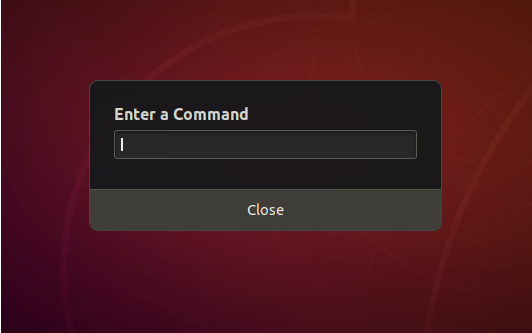
11
Logout
When you need to log out, please press the "CTRL + ALT + DEL" key on the keyboard. If you open the application, you will be prompted whether you really want to log out. If you have other ideas about this, just click the "Cancel" button. If you want to continue logging out, click Log Out.
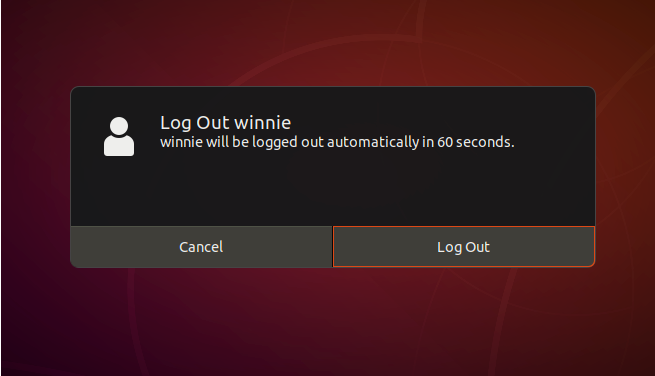
12
Close a window
There are several ways to close running applications in Ubuntu. The general method used on Windows is the "Alt + F4" combination. In addition, you can press "CTRL + Q" to run an application.
Assign custom keyboard shortcuts
Ubuntu keyboard shortcuts are not all functional. You can also create your own custom shortcuts. Just click "Settings>Device>Keyboard". A list of possible keyboard shortcuts will be displayed. To define a shortcut, scroll down and click the plus button (+) shown below.
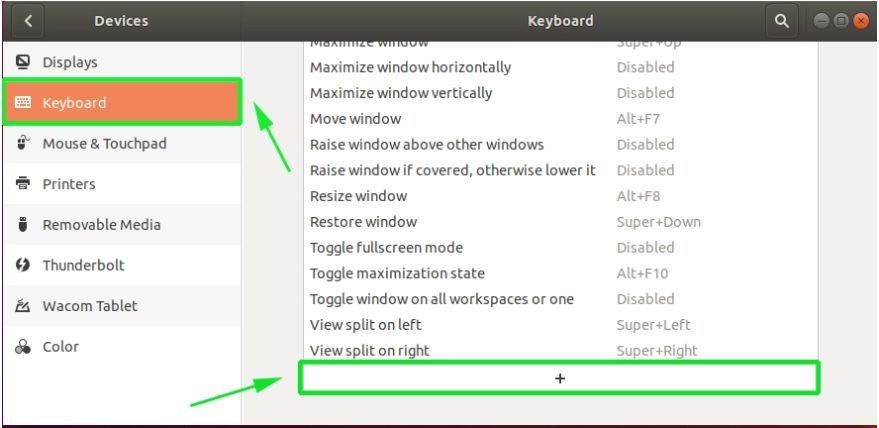
Next, define the name of the shortcut and provide Ubuntu keyboard shortcut commands. Next, click "Set Shortcut" and then click the "Add" button in the upper right corner of the pop-up window.
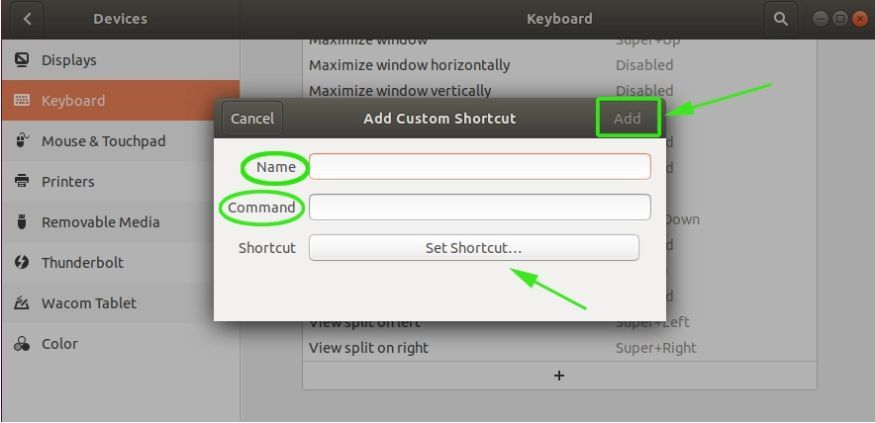
Defining Ubuntu keyboard shortcuts Conclusion This is our topic about Ubuntu keyboard shortcuts. Feel free to try and use.
Recommended Posts